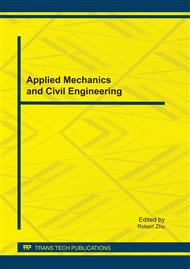p.149
p.154
p.159
p.167
p.175
p.181
p.186
p.192
p.198
Study on Mass Concrete Slab Construction Technology of Dalian World Finance Center
Abstract:
Through the research on the mass concrete slab construction technology of Dalian World Finance Center, this paper has systematically summarized the integrated construction technology of super high-rise mass concrete slab, including key issues such as mix design technology, pouring time selection, construction elements and temperature testing technology. The one-time continuous pouring of 8000m3’s concrete requires about 66 hours and no temperature cracks appear in the concrete surface. A number of similar engineering practices indicate that the maximum adiabatic temperature rise is mainly subjected to the control of concrete mix composition and internal and the temperature difference between inside and outside is mainly controlled by the moisture and insulation measures, which are the two major critical factors controlling mass concrete slab temperature cracks, providing references to future similar mass concrete construction.
Info:
Periodical:
Pages:
175-180
Citation:
Online since:
October 2011
Authors:
Price:
Сopyright:
© 2012 Trans Tech Publications Ltd. All Rights Reserved
Share:
Citation:


